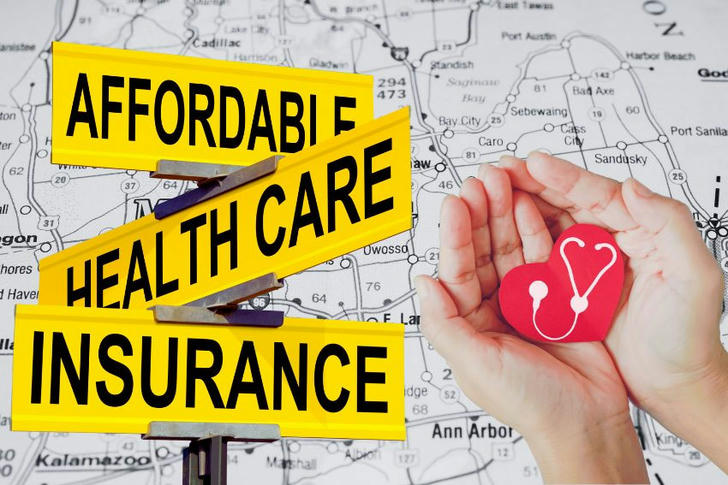The Smart American’s Guide to Health Insurance: How to Avoid Costly Mistakes and Get the Best Coverage
Health insurance isn’t just a safety net—it’s a financial necessity. A single unexpected illness or injury can lead to crippling medical debt if you’re uninsured. In this guide, we’ll break down exactly how to choose the best health insurance plan for your needs, with real-world examples, cost comparisons, and expert-backed strategies to maximize coverage while minimizing expenses.
Why Health Insurance Is Non-Negotiable in the U.S.
The U.S. healthcare system is the most expensive in the world. Without insurance, even routine procedures can cost thousands:
- Emergency room visit for a broken arm: $2,500–$7,500
- 3-day hospital stay for appendicitis: $30,000+
- Diabetes medication (monthly): $300–$600
Real-Life Consequences of Being Uninsured
James, a 40-year-old contractor in Florida, thought he could skip insurance to save money. When he developed severe pneumonia, his hospital bill came to $22,000. Had he enrolled in a Silver-tier ACA plan ($350/month), his out-of-pocket maximum would have capped his costs at $7,000 for the year. Instead, he faced years of medical debt.
Key Takeaway: Health insurance isn’t just about avoiding bills—it’s about financial survival.

Step-by-Step: How to Pick the Best Health Insurance Plan
1. Know Your Options (And Which One Fits Your Life)
| Plan Type | Best For | Pros | Cons |
|---|---|---|---|
| Employer-Sponsored | Full-time employees | Lower premiums, employer contributions | Limited choice, tied to job |
| ACA Marketplace (Obamacare) | Self-employed, freelancers, uninsured | Income-based subsidies, guaranteed coverage | Limited enrollment periods |
| Medicaid | Low-income individuals | Free or very low-cost | Strict eligibility rules |
| Medicare | Seniors (65+) & disabled | Broad coverage, reliable | Doesn’t cover everything (needs supplements) |
| Short-Term Plans | Temporary coverage (e.g., between jobs) | Cheap, fast approval | Excludes pre-existing conditions, minimal coverage |
2. Crunch the Numbers—Don’t Just Look at Premiums
A cheap monthly premium could mean sky-high out-of-pocket costs. Always calculate:
- Deductible: What you pay before insurance starts covering costs.
- Example: A $5,000 deductible means you pay the first $5,000 of medical bills each year.
- Copays & Coinsurance: Your share after the deductible.
- Example: A 20% coinsurance on a $10,000 surgery = $2,000 out of pocket.
- Out-of-Pocket Maximum: The most you’ll pay in a year (ACA plans cap this at $9,100 for individuals, $18,200 for families in 2024).
Which Plan Actually Saves You Money?
- If you rarely see a doctor: High-deductible plan (HDHP) + HSA (tax-free savings for medical expenses).
- If you have chronic conditions (diabetes, heart disease): Gold or Platinum ACA plan (higher premiums but lower out-of-pocket costs).
3. Avoid the #1 Mistake: Ignoring Provider Networks
- HMOs (Health Maintenance Organizations):
- Cheaper, but you must stay in-network (except emergencies).
- Need a primary care referral to see specialists.
- PPOs (Preferred Provider Organizations):
- More flexibility (can see out-of-network doctors, but at higher cost).
- No referrals needed.
Why This Matters:
Maria chose a cheap HMO but didn’t realize her asthma specialist wasn’t covered. She had to pay $1,200 out of pocket for a single visit—wiping out her supposed "savings."

4. Prescription Coverage: Don’t Get Surprised at the Pharmacy
- Every plan has a formulary (list of covered drugs).
- Some insurers require prior authorization or step therapy (trying cheaper drugs first).
Example:
- Brand-name insulin: $400+/month without coverage.
- Generic or formulary-covered insulin: $30–$100/month.
Always check your plan’s drug list before enrolling.
3 Costly Health Insurance Mistakes (And How to Avoid Them)
1. Waiting Until You’re Sick to Enroll
- ACA Open Enrollment is only Nov 1–Jan 15 (unless you qualify for a Special Enrollment Period).
- Medicare has strict deadlines—miss them, and you’ll face penalties.
2. Underestimating Future Health Needs
- A cheap plan today could mean bankruptcy tomorrow if a major illness hits.
- Young and healthy? Accidents happen—high-deductible plans still protect you from financial ruin.

3. Not Using Preventive Care (It’s Free!)
- ACA plans cover annual check-ups, vaccines, and screenings at no extra cost.
- Catching problems early saves money (and lives).
Final Tips to Save Money on Health Insurance
✅ Shop Around Annually – Insurers change prices and networks every year.
✅ Use an HSA (Health Savings Account) – Tax-free savings if you have an HDHP.
✅ Negotiate Bills – Uninsured or high out-of-pocket costs? Many hospitals offer payment plans or discounts.
